Hello and welcome to the St Mary Bourne website and in particular St Peter’s Church.
This page will give you a little information about the church but if you do visit the building there is a church guide that will tell you what to look out for as you walk around the building.
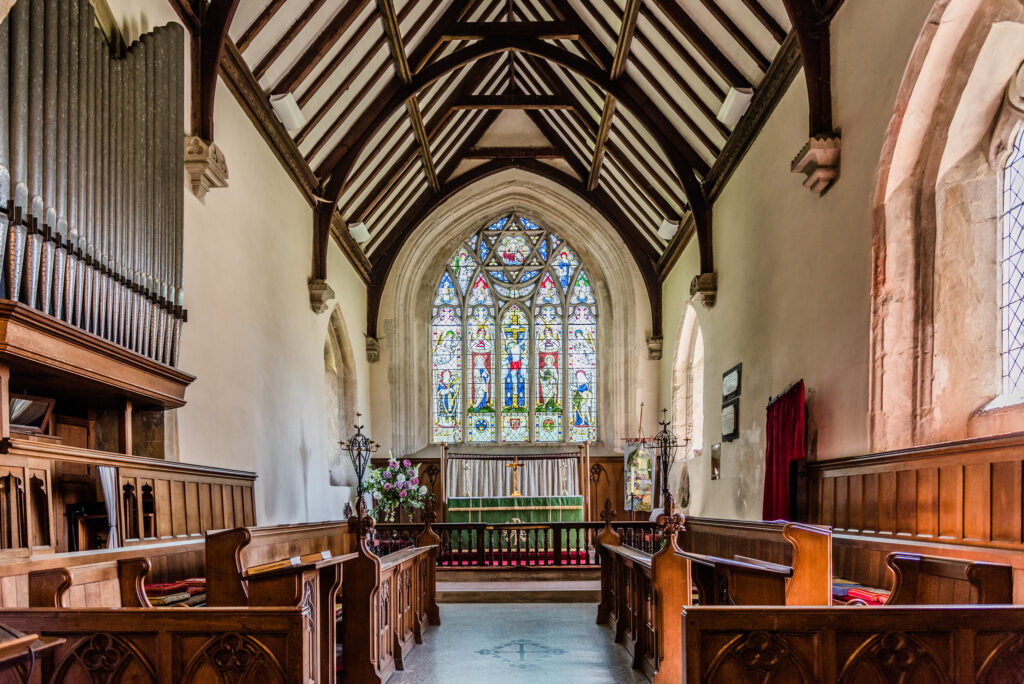
The chancel dates from the late 12th century and was “restored” in 1855. It was then that the roof was raised to enable the height of the present east window, which was by A H White in 1928. The north and south windows are the original 14th-century windows, kept when the roof was raised.
Someone has written that St. Peter’s Church, St. Mary Bourne is one of the most “puzzling” in the county.
Architecturally Puzzling
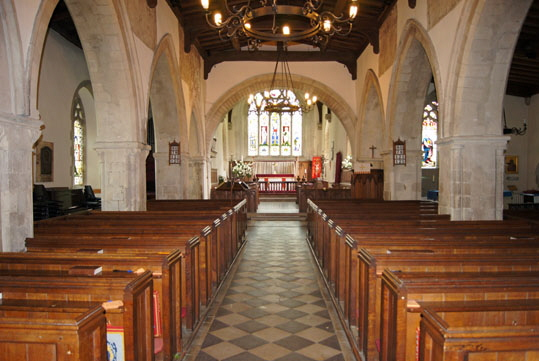
Why are the pillars not directly opposite each other across the church? Why is the arch directly to your right as you enter so thick? Why is the first arch in the north arcade (row of arches) so small and narrow?
No details earlier than the second half of the 12th century can now be seen, but the present chancel arch has 12th-century masonry which was re-used early in the 14th. In or around 1350–60 the south or Lady chapel of the nave was added. The upper part of the tower suggests a rebuilding in the 16th or 17th century.
A Name that is puzzling
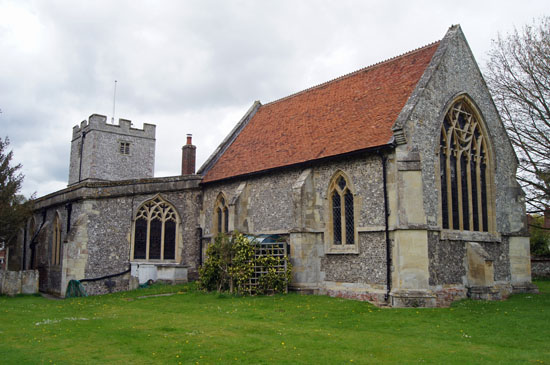
Why, in a village called St Mary Bourne, is the church dedicated to St Peter, along with Hurstbourne Tarrant?
The Church was originally dedicated to St Mary, and this early dedication was retained in the name of the village. It is also likely that the Church had a second dedication, to St Peter, at least from the 14 century, who has become its main patron saint now.
A Puzzling Gift
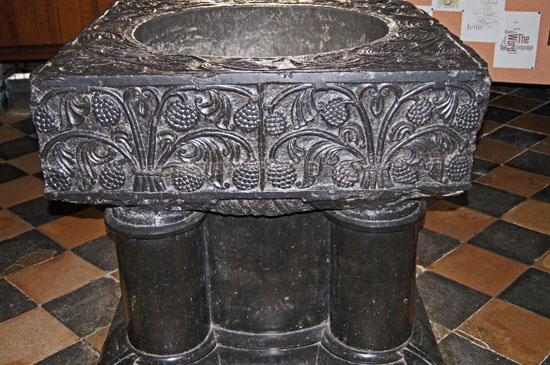
Why does this village church – up to the early 20th century only a daughter chapel to the Parish Church of Hurstbourne Priors – have one of the four Hampshire (and seven English) 12th century Tournai – the ‘marble’ fonts?
The nearest similar late Norman Baptismal Font, carved at Tournai, present-day Belgium, from the stone still quarried there, is in Winchester Cathedral. There is another in Lincoln Minster, one also in East Meon. This size and design suggest it was a magnificent and expensively rare gift. The Font was almost certainly the gift of Bishop Henri de Blois, the very well-connected Bishop of Winchester 1129-71, He was a grandson of William the Conqueror, and a brother of King Stephen. He is also known to have had a special devotion to St Mary It is thought that the St Mary Bourne Chapel was his deliberate choice for the installation of a rare Baptismal Font honouring St Mary and with the spring-fed – pure water from the River Bourne, there may well have been a holy well or spring flowing near the Church.
Puzzling Stones
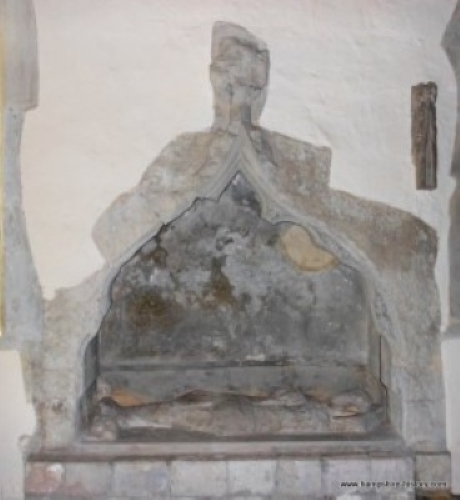
Why was the ‘crusader’ tomb in the south aisle ruined and the effigy of the knight defaced? Why are there many small crosses scratched onto the older stonework?
There are some simple scratched crosses inside the church and the south entrance door suggests that there were pilgrims visiting in the 14 and 15 centuries. The crosses are a common sign and pattern, scratched by the knives of departing pilgrims, who had renewed their Baptismal vows at the altar. We believe that the church was visited by many medieval pilgrims, as a minor shrine of St Mary graced by the magnificent Font.
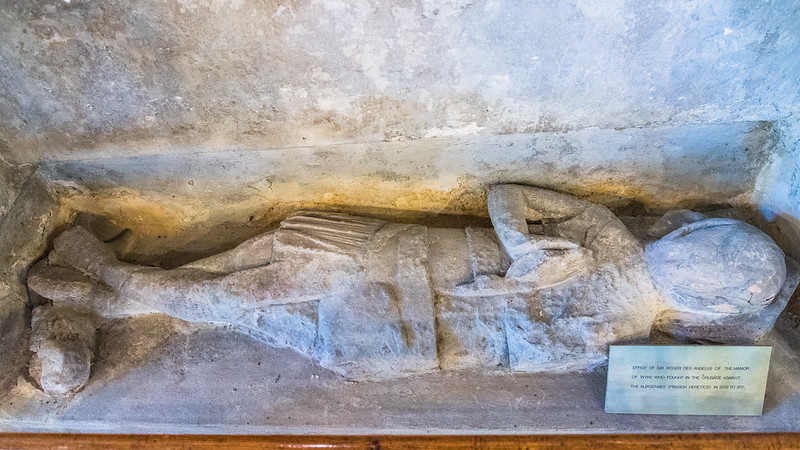
Some Highlights
The Baptismal Font (mentioned above) but very special!
For many years the font stood on a single sandstone pillar, now outside the church on the north side of the tower. The present base was commissioned from the Tournai quarries and brought over, not without incident, in 1927. The carving on this font is relatively abstract and symbolic: there are Norman arches, doves, and fleur-de-lys, symbolising purity. There are vines, bunches of grapes (fruiting vines) suggesting the fruitful life in Christ

The “Vinegar” Bible
In the glass case by the north door is a copy of the “Vinegar” Bible of 1717, so-called because of the misprint “Vinegar” for “Vineyard” in the heading of the parable in Luke chapter 20.
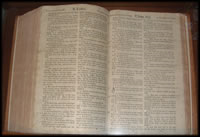
Roll of Honour
All those who served in the First World War from the parish are listed on the Roll which is hung in the north aisle. All these men from here, a relatively small village.
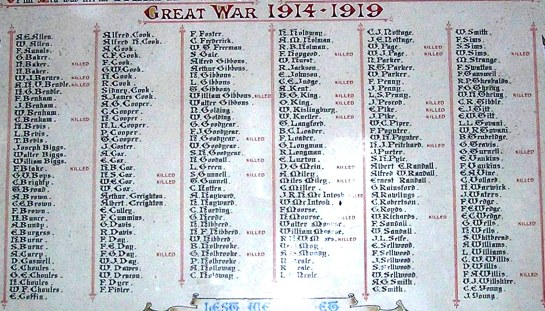
Tiles by the Font and the Millennium Stone
The few remaining medieval tiles date from the 14th century. The Millennium Stone, in front of the font was laid in 1999. It was designed and cut by a local stone carver, Marilyn Smith of Hurstbourne Priors.
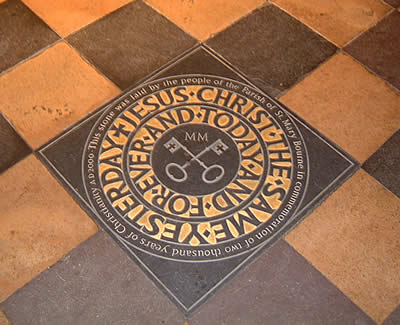
The Oak Table
There is a plain old oak altar table heavily graffitied by worshippers (or their children) in the past, the panels are very fragile these days but it’s a wonderful piece of history.
The Tower and the Bells
The west tower, with its strong flint-work walls, three feet thick at the bottom, two feet thick above, was begun around 1420. Possibly, it was not completed until the time of Elizabeth I.
Six bells are hung. Five were cast by Knight of Reading in 1683 and were recast at various times in the late 17th and early 18th centuries The sixth was added in 1926.

The Lectern
The church has a late 17th-century or 18th-century lectern with a four-sided desk, which revolves on a turned middle post. From it are suspended two chains, which served to secure the books resting upon it. In 2018 the BBC filmed it for a series on churches that they were doing.
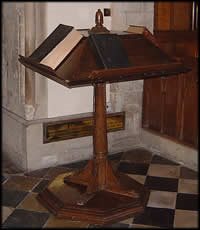
The Ancient Yew Tree
We believe the yew tree outside the main front entrance to the church is over 800 years old.
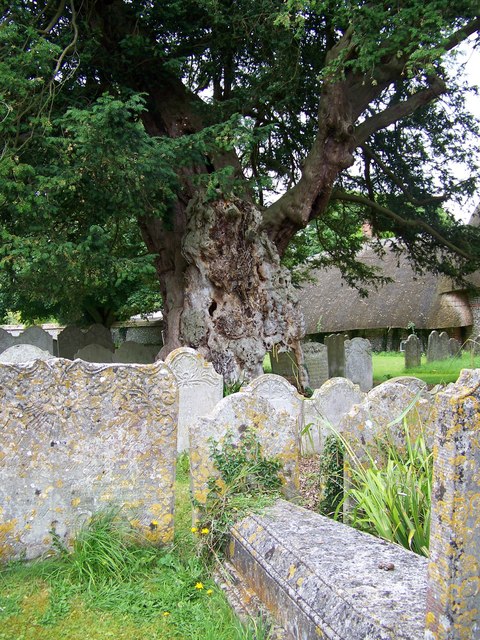
And of course much more…